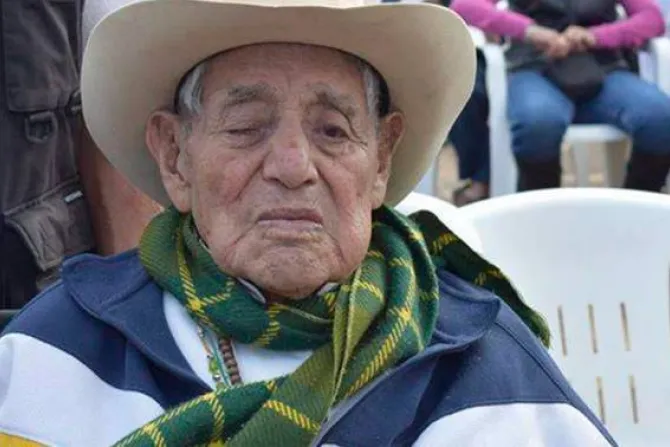Mexico City, Mexico, Mar 11, 2016 / 05:56 am
The last known surviving soldier of the Cristero War, Juan Daniel Macías Villegas, died last month in his home town of San Julián, Mexico. He was 103 years old.
Mexican photojournalist Alejandro Moreno Merino told CNA that the funeral rites for Macías took place at San José church, with his children, grandchildren, great-grandchildren, and great-great-grandchildren in attendance.
The attendees walked in procession almost two miles to the cemetery next to the "Cristero National Guard," a Catholic organization that seeks to preserve the memory of the martyrs who died during the religious persecution in Mexico in the early 20th century.
Mexico's Cristero War was sparked by anti-clerical legislation being passed by the Mexican President Elías Calles in 1926.
The laws banned religious orders, deprived the Church of property rights and denied priests civil liberties, including the right to trial by jury and the right to vote.
As the restrictions on religious liberty increased, Catholics could be fined or imprisoned for teaching Church doctrine, wearing clerical attire, meeting together after their convents were disbanded, promoting religious life or holding religious services in non-church locations.
The persecution became so fierce that thousands of Catholics began to forcibly resist, fighting under the slogan and banner of "Cristo Rey" (Christ the King).
Juan Macías Villegas último soldado sobreviviente de Guerra Cristera falleció a los 103 años https://t.co/E67fH7GwKJ pic.twitter.com/tksRab0K5O
- ACI Prensa (@aciprensa) March 10, 2016
Macías was among those who fought the persecution. Born on July 21, 1912 in a town called Rancho de los Palos Verdes, he was baptized by a priest named Father Narciso Elizondo, the same one who years later blessed him when he took up arms.
When he was 13 years old, he started to fight with the "Cristeros" under the famed General Victoriano Ramírez and was part of his squadron called "the Dragons of El Catorce." He took part in various campaigns in the Jalisco and Guanajuato highlands area, and in the second Cristero campaign (1935-1937) under the command of Lauro Rocha.
After the war, Macías lived in the rural community of San Julián until the day he died. This area produces milk and raises cattle, and also was the first town to take up arms on January 1, 1927 against the repressive government laws of that time.


